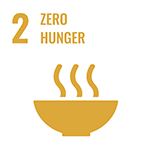Increasing agricultural viability and climate resilience through community seed banks in Nepal

Summary
Farmers in many regions of Nepal and other parts of the Hindu Kush Himalaya have, over time, had to rely on monocultures of hybrid crop varieties. This increases their dependence on private seed companies and raises their input costs. Hybrid varieties are susceptible to disease and often cannot withstand the vagaries of a changing climate. In response, Local Initiatives for Biodiversity, Research and Development (LI-BIRD) has established a community seed bank (CSB) at Pingdanda, a village in Sindhupalchok district, Nepal.
Local crop diversity which are well adapted to local climatic conditions are being replaced by hybrid seeds, creating a problem for farmers in the region. Hybrid crop varieties are susceptible to disease and pests and require a high quantity of agrochemical inputs. Moreover, these hybrid varieties often cannot withstand the hostile agricultural environment – erratic rainfall, high temperatures, droughts, and powerful winds – brought forth by climate change.
In order to address the varied problems narrated above, Local Initiatives for Biodiversity, Research and Development (LI-BIRD) has established a community seed bank (CSB) at Pingdanda, a village in Sunkoshi Rural Municipality, Sindhupalchowk District, Nepal. CSB is established to increase the utilization of local crop genetic resources, reduce dependency on imported hybrid seeds, and strengthen the local seed system, ultimately helping to build climate resilience into the farming system. As CSB helps to increase quality seed access at an affordable price at the local level, it reduces the production cost for farmers. In addition, CSB promotes on-farm participatory research enabling local farmers to evaluate and choose locally preferred crop diversity via diversity block.
Overview
- Location:
- Implementation sites:
-
- Single country
- Multiple locations
- Mountain region:
- Site locations:
- Solution scale:
- Ecosystem type(s):
- Solution type(s):
- Sector(s):
- Climate impact(s) addressed:
- Climate impact time-scale(s):
- Main benefit associated with the solution:
- Implementation timeline:
-
- 2019 - 2023
- Sendai targets:
-
Solution details
Main beneficiaries & outcomes
The Pingdanda CSB has been conserving 111 varieties of 59 local crop species such as rice, maize, wheat, beans, millets, and vegetables etc . It has maintained registers that have recorded knowledge and information regarding local varieties available within the community. Its helps to identify and promote use of crop diversity as well as contributes to protect bio piracy. The seed bank has also become a knowledge hub where people can learn about agricultural biodiversity and its uses.
The Pingdanda CSB produces 3–4 tons of quality certified improved seeds of rice and maize and stores them safely to distribute later. It has prioritized access to seeds by women, and marginal and smallholder farmers, who tend to have limited access to quality seeds. Him Bahadur Acharya, chairperson of the Pingdanda agricultural cooperative in Sindhupalchowk, said, “We are protecting the local seeds that are climate-resilient and which give almost equal quantity of produce with lesser inputs and lower costs of production.” He then added, “Now people do not need to go to the agro-vet all the time for seeds.”
Planning and implementation
The site for the establishment of the CSB was selected considering distance from the market, access to roads, the presence of vulnerable and marginal communities, well-functioning farmers’ institutions, and opportunities to sell seeds at a commercial scale. After the site was identified, local farmers were consulted to build local ownership and participate in establishing a CSB. The available crop diversity and traditional knowledge associated with those varieties was documented via various participatory methods. These included a crop inventory, four cell analysis (a technique to assess the diversity and distribution of local crop varieties), maintaining a community biodiversity register, and generating a passport data book; essential methods to identify unique, rare varieties, and genetic resources that need immediate attention. An action plan covering all aspects of the establishment of the CSB was created immediately after documentation.
Capacity building training and orientation that focused on local crop conservation, quality seed production, seed certification, and organizational governance were organized targeting CSB member farmers and the management team. Furthermore, the CSB in Pingdanda has developed links with the local authorities and governmental and non-governmental line agencies to leverage their resources and collective efforts.
There was no exact timeline for the implementation of the solution. However, reflecting upon the CSB, it can take around 3 to 5 years depending upon the capacity of the institution to be fully functional.
Finance
Two separate funds – the Seed Fund and the Community Biodiversity Management (CBM) fund – were developed to achieve a self-financing mechanism for the sustainability of the Community Seed Bank (CSB). The CBM Fund is mobilized as a revolving fund that provides a collateral free loan to the farmers at lower interest rates than other sources. Revenue generated by the fund mobilization is used for the conservation of local crop diversity and to cover administrative expenses of the CSB. The Seed Fund is used to procure and market the produced seeds. Earned profit from both funds are used for the sustainable management of the CSB. At the same time, the members of the CSB management committee coordinate with various governmental institutions and authorities for resource leverage.
Innovation
This solution is innovative in that it relies on local knowledge and farmer participation in its design, but also acts as a knowledge hub itself once implemented, offering further training opportunities to increase awareness of seed conservation and resilience in the local community. Furthermore, the community seed bank gives priority access to marginalised groups, such as women and smallholder farmers, who often lack access to good quality seeds.
Capacities for design and implementation
Knowledge
The farmers’ local knowledge was key to assessing the diversity and distribution of crop varieties, and also in establishing next steps for the community seed bank, such as which seeds to prioritise. The use of participatory research approaches allowed local knowledge to be highlighted and have an impact in the final solution. Furthermore, capacity building training was conducted for local farmers and the management team, to expand their knowledge on local crop conservation, quality seed production, seed certification, and organizational governance.
Political / Legal
Technical support was provided to local/provincial/federal governments to help mainstream both local crop conservation and community seed banks in national systems, through policy formulation and program designing.
Institutional
Partnerships with the local authorities and governmental and non-governmental line agencies helped increase the resources available to the community seed bank.
Socio-cultural
Participatory methods were used throughout the design and implementation of the solution. For example, four cell analysis, used to assess the diversity and distribution of local crop varieties, is achieved through focus group discussions with farmers in local communities. Farmers identify their local crop varieties, and through conversations, it is established how widely distributed they are in the community and if any particular varieties are under threat. Participatory techniques, such as this, helped to inform the action plan for the community seed bank and decide which local varieties to prioritise.
Outlook & Scalability
Barriers and adverse effects
One of the major bottlenecks in high altitude regions is the limited land available for seed production. This can make it challenging to meet the demands of the local community and markets.
Another potential barrier to consider is inadequate partnerships between communities and local governments. For CSBs to be successful, they need to be deemed as relevant and important by local authorities, who can support through ownership and resources.
Potential for upscaling and replication
Until now LI-BIRD have been involved in establishing 23 CSBs across the country, out of which 9 are situated in High Hills of Nepal. Recently, the federal government of Nepal has initiated a National program – “Agrobiodiversity Conservation Program” – and the Community Seed Bank is the implementing partner. Furthermore, Crop Development and Agrobiodiversity Conservation Center and LI-BIRD have jointly developed an operational manual on the establishment and management of CSB. Hence, CSB is a viable solution and can be replicated and upscaled in other high altitude locations.
- Women-centric approach to enhance resilience in Kavre district, Nepal
- Climate change and security in Nepal: Pilot intervention
- Increasing adaptive capacity to respond to impacts of climate change and variability in agriculture sector in Nepal
- Combining ecological and infrastructural restoration in Panchase Mountainous Region, Nepal




Comments
There is no content